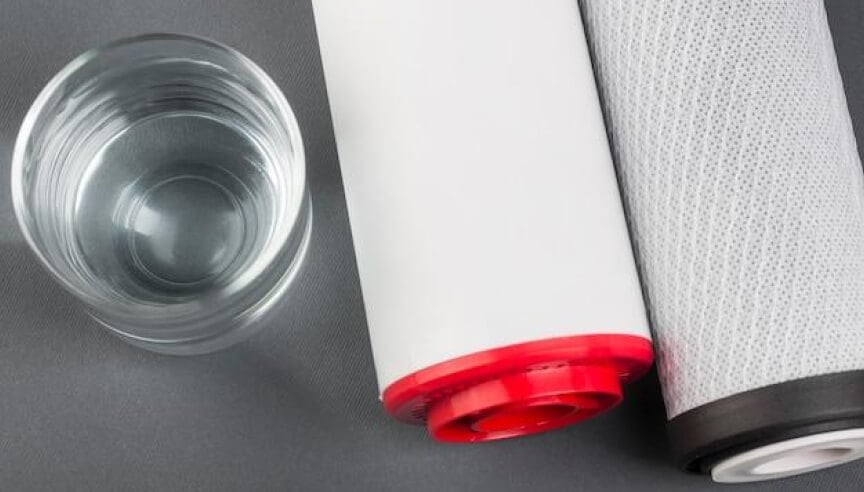Recent Posts
Membrane materials for water purification

Materials Used in Water Purification Membranes and Their Applications
Water purification membranes are crucial in various water treatment processes, providing clean and safe water for various uses. The performance and efficiency of these membranes are significantly influenced by the materials they are made from. Different materials are suitable for different applications, depending on factors such as the type of contaminants present, the desired purity level, and the operating conditions. Here, we explore the common materials used in water purification membranes and the best applications for each.
Common Materials Used in Water Purification Membranes
1. Cellulose Acetate (CA)
- Description:
Cellulose acetate is a semi-synthetic polymer derived from natural cellulose. It is one of the earliest materials used for membrane fabrication. - Applications:
CA membranes are commonly used in low-pressure applications, such as in some residential reverse osmosis (RO) systems and dialysis. They are effective in removing a variety of contaminants, including bacteria and organic compounds. - Advantages:
- Good resistance to chlorine.
- Relatively low cost.
- Disadvantages:
- Sensitive to pH extremes and higher temperatures.
- Lower flux rates compared to some synthetic membranes.
2. Polyamide (PA)
- Description:
Polyamide membranes, often referred to as thin-film composite (TFC or TFM) membranes, are widely used in RO and nanofiltration (NF) applications. They are made from polyamide layers formed on a porous support. - Applications:
PA membranes are used in municipal water treatment, desalination, industrial wastewater treatment, and home water purification systems. - Advantages:
- High rejection rates for a wide range of contaminants, including salts, heavy metals, and organic molecules.
- High flux and durability.
- Disadvantages:
- Susceptible to fouling by chlorine and other oxidizing agents.
- Typically more expensive than cellulose acetate.
3. Polysulfone (PS) and Polyethersulfone (PES)
- Description:
PS and PES are thermoplastic polymers known for their strength and thermal stability. They are often used as ultrafiltration (UF) and microfiltration (MF) membranes. - Applications:
These membranes are ideal for applications requiring the removal of bacteria, viruses, and larger particulates, such as in dairy processing, pharmaceuticals, and potable water production. - Advantages:
- Excellent mechanical strength and chemical resistance.
- Good thermal stability.
- Disadvantages:
- Lower rejection rates for dissolved salts and small organic molecules.
- Higher cost compared to some other materials.
4. Polyvinylidene Fluoride (PVDF)
- Description:
PVDF is a highly non-reactive and pure thermoplastic fluoropolymer. It is widely used for microfiltration and ultrafiltration membranes. - Applications:
PVDF membranes are used in potable water treatment, wastewater treatment, and industrial processes requiring chemical resistance. - Advantages:
- High resistance to chemicals and UV radiation.
- Good mechanical strength and thermal stability.
- Disadvantages:
- Higher cost.
- Potential for fouling, although modifications and coatings can mitigate this.
5. Ceramic Membranes
- Description:
Ceramic membranes are made from inorganic materials such as alumina, zirconia, or titania. They are known for their robustness and longevity. - Applications:
These membranes are used in challenging environments, such as in food and beverage processing, pharmaceuticals, and wastewater treatment involving aggressive chemicals and high temperatures. - Advantages:
- Excellent chemical and thermal resistance.
- Long lifespan and high flux rates.
- Disadvantages:
- High initial cost.
- Brittle and prone to damage if not handled carefully.
Choosing the Best Material for Different Applications
1. Residential Water Purification:
- Best Material:
Polyamide (PA) for reverse osmosis due to its high rejection rates and efficiency. - Alternative:
Cellulose acetate (CA) can be used in less demanding applications where chlorine resistance is beneficial.
2. Municipal Water Treatment:
- Best Material:
Polyamide (PA) for high-performance desalination and contaminant removal. - Alternative:
Polyethersulfone (PES) for ultrafiltration to remove bacteria and viruses effectively.
3. Industrial Wastewater Treatment:
- Best Material:
Ceramic membranes due to their robustness and ability to handle harsh conditions. - Alternative:
Polyvinylidene fluoride (PVDF) for chemical resistance and high flux.
4. Food and Beverage Processing:
- Best Material:
Ceramic membranes for their ability to withstand cleaning agents and high temperatures. - Alternative:
Polysulfone (PS) for its balance of mechanical strength and chemical resistance.
5. Pharmaceuticals:
- Best Material:
Polysulfone (PS) or polyethersulfone (PES) for ultrafiltration, providing a high level of purity and sterilization. - Alternative:
PVDF for applications requiring strong chemical resistance.
The choice of material for water purification membranes depends on the specific requirements of the application, including the type of contaminants, operating conditions, and desired purity levels. Polyamide membranes are highly effective for residential and municipal water treatment, while ceramic membranes excel in industrial and high-temperature applications. Understanding the strengths and limitations of each material allows for optimal selection, ensuring efficient and reliable water purification across various settings.
